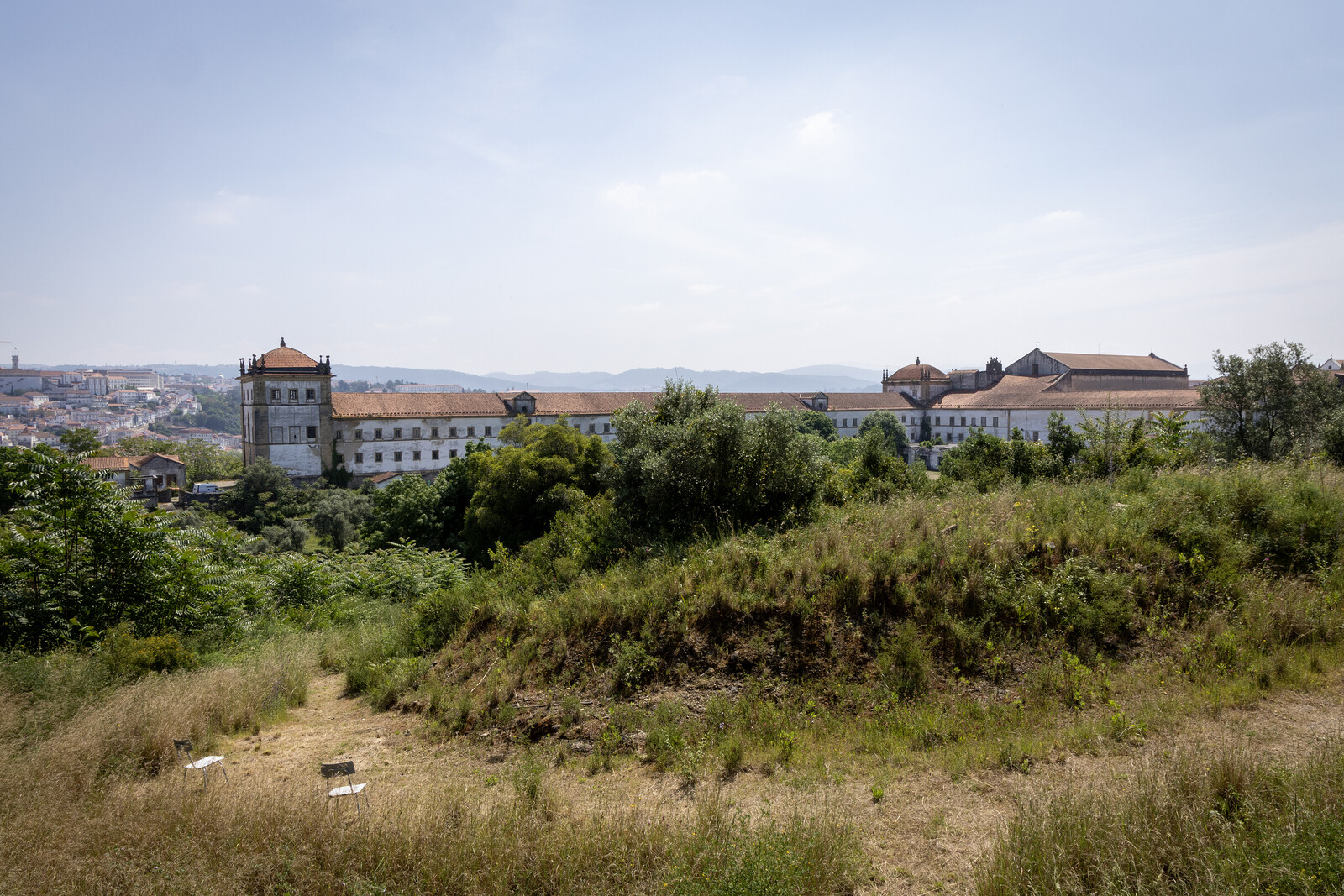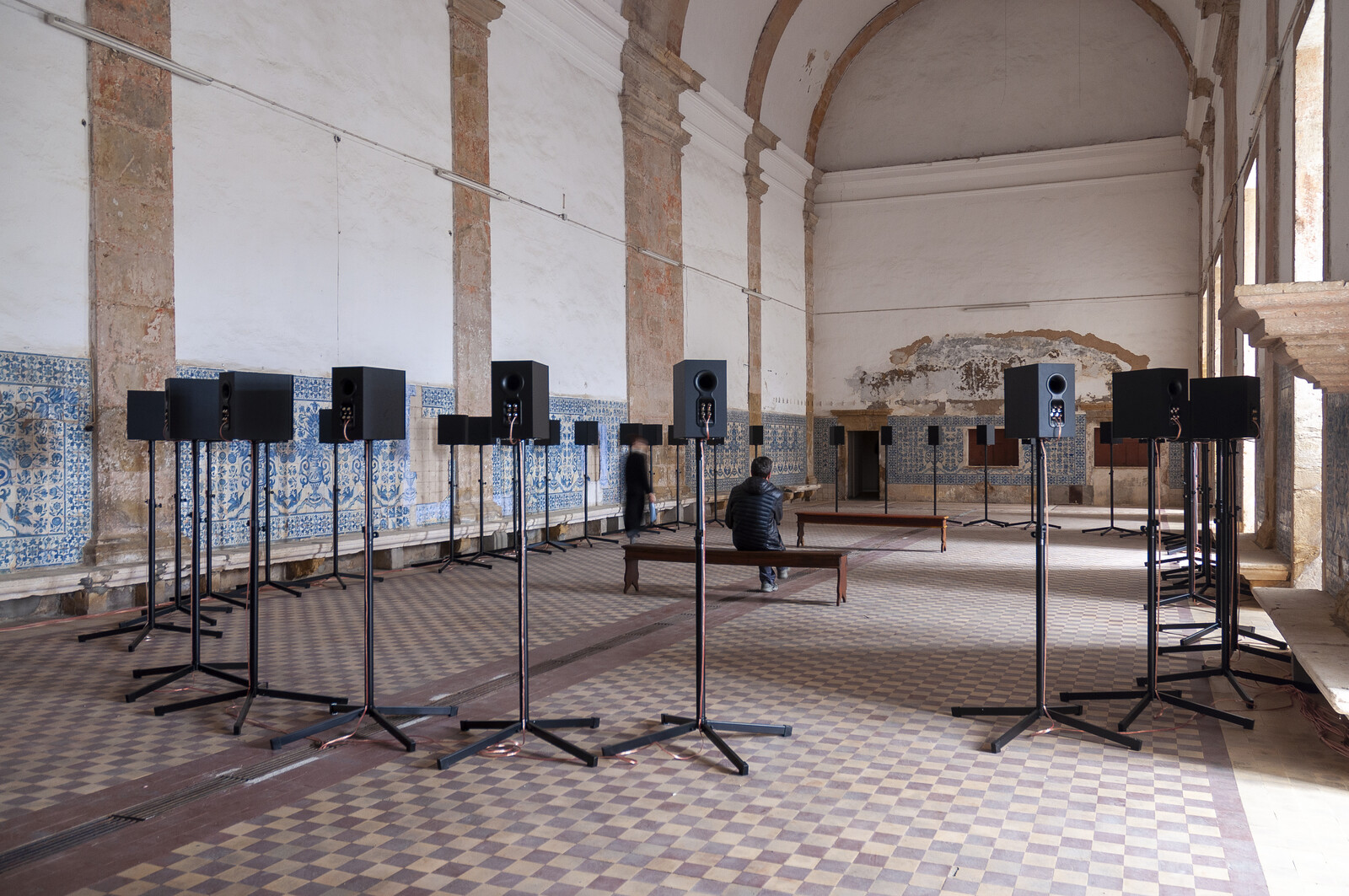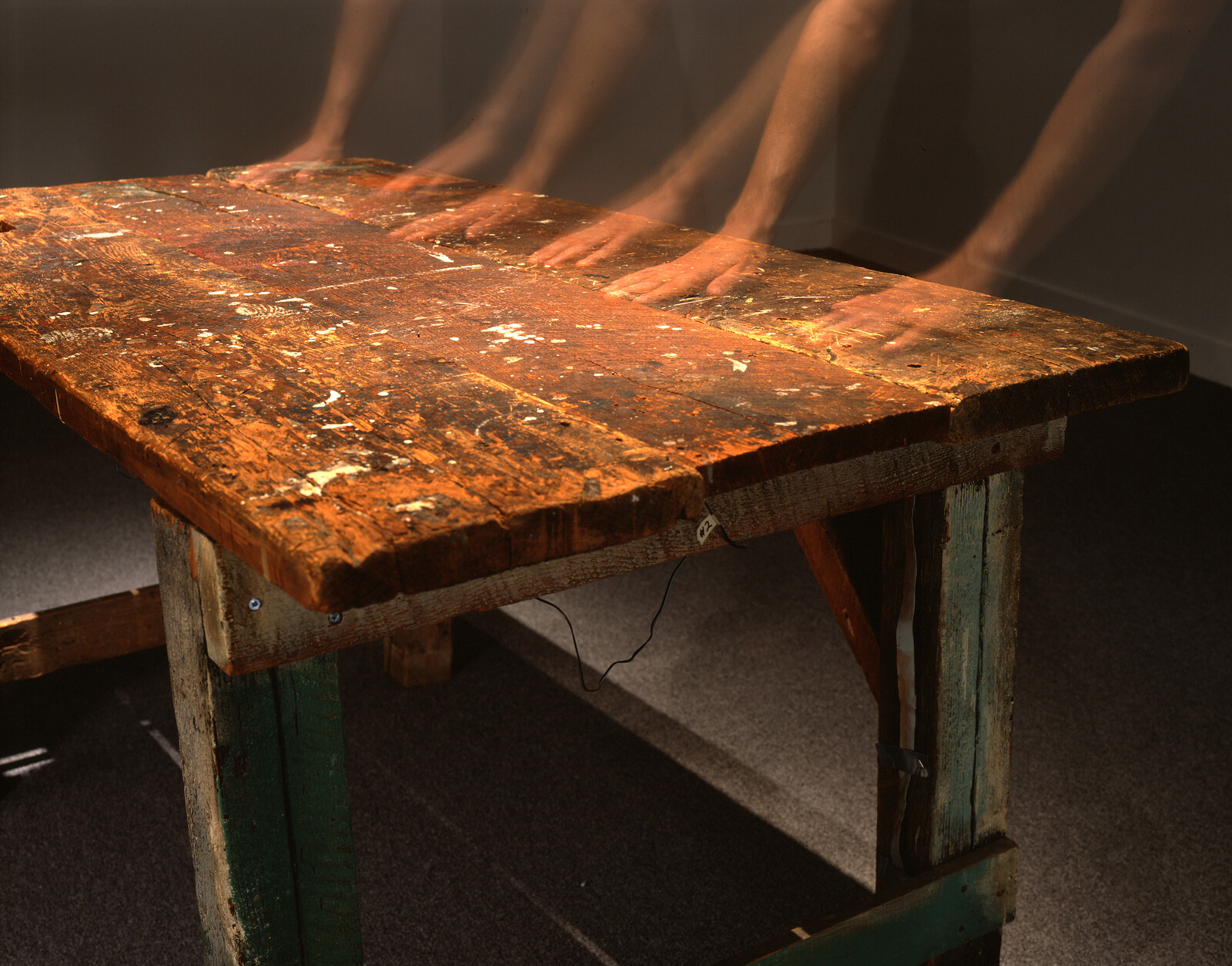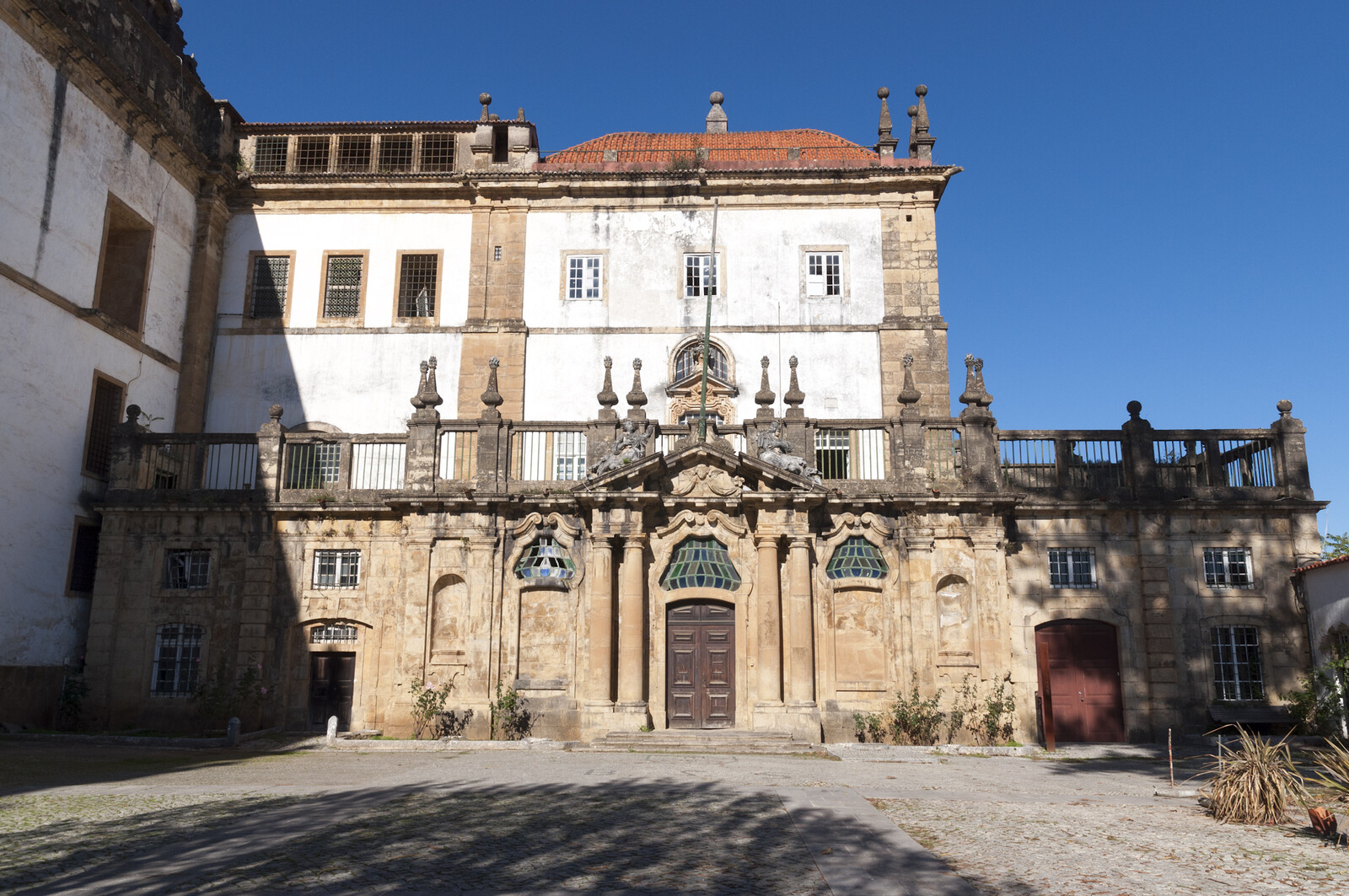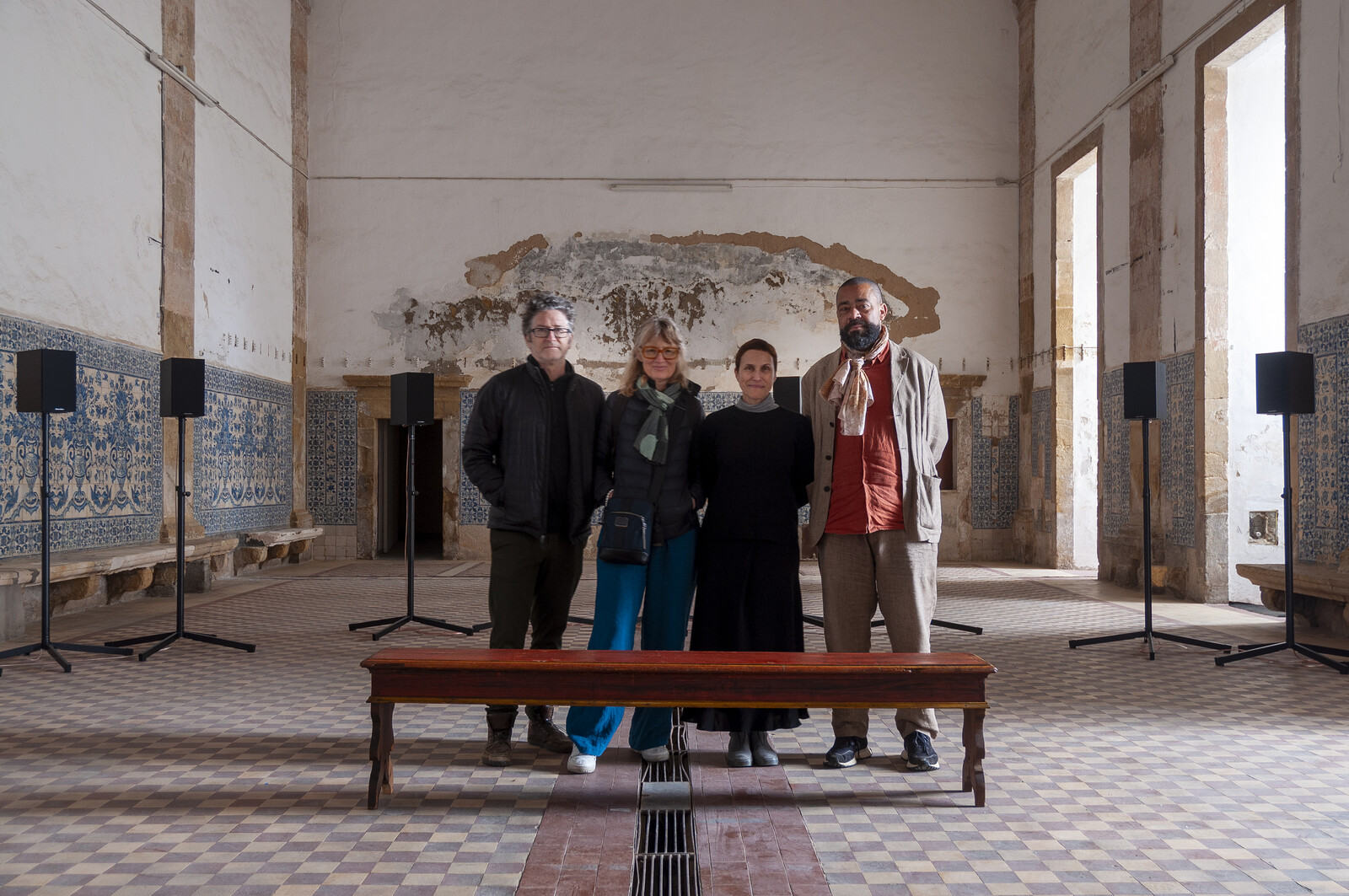The Factory of Shadows
April 5–July 5, 2025
Calçada Santa Isabel
3040-270 Coimbra
Portugal
“We are interested in how sound can change a space, how it can transport a person into a memory, a dream, or a completely different reality.” —Janet Cardiff & George Bures Miller
Anozero—Bienal de Coimbra is pleased to present The Factory of Shadows, a solo exhibition by internationally renowned Canadian artists Janet Cardiff & George Bures Miller. This marks the duo’s first solo exhibition in Portugal and is presented in the Monastery of Santa Clara-a-Nova in Coimbra.
Known for their immersive multimedia installations that explore sound, memory, and narrative, Cardiff & Miller transform the historic landmark into a realm of auditory and visual storytelling. The Factory of Shadows proposes a reflection on perception and illusion, engaging visitors in a heightened awareness of their own movement through sound and space. The exhibition acts as a “listening machine,” revealing the Monastery as both a historical site and a stage for the traces of sound, history, and memory.
Artists Janet Cardiff & George Bures Miller: “Exhibiting in the Monastery of Santa Clara-a-Nova is like stepping into a living memory. The space carries the weight of centuries, and our work seeks to activate its echoes, weaving sound and history into an immersive experience. Coimbra’s layered history resonates deeply with our practice. In the Monastery, we hope to create a dialogue between past and present, where sound becomes a bridge between what was and what remains. With The Factory of Shadows, we want to explore how sound and movement create shifting realities. Our installations are like living entities—whispering, responding, and transforming as visitors navigate the space. It’s about perception, illusion, and the way sound can shape our sense of presence.”
Artworks in dialogue with a city
Curated by the Círculo de Artes Plásticas de Coimbra, The Factory of Shadows presents over a dozen works spanning the past three decades, including The Forty Part Motet (2001), one of the artists’ most celebrated sound installations, and The Infinity Machine (2015), which will be exhibited in Europe for the first time.
As Carlos Antunes, director of Círculo de Artes Plásticas de Coimbra, notes: “Cardiff & Miller’s work transforms space into experience. In the Monastery, their installations amplify the whispers of history, inviting audiences to listen not just with their ears, but with their entire bodies. The Monastery itself feels like a ‘Factory of Shadows’—a place where time, memory, and perception shift in unexpected ways. We want visitors to experience that transformation through sound.”
Alongside the exhibition, Anozero-Coimbra offers an extensive educational program, inviting the public to explore the Monastery. Notably, guest artists lead interactive experiences, guiding visitors through the exhibition. The program also features concerts, workshops, and creative activities open to all.
The exhibition forms part of an ongoing initiative in Coimbra to re-imagine the city—long recognised as a UNESCO World Heritage site for its centuries-old university, one of the oldest in Europe—as a dynamic space for contemporary art.
The Monastery of Santa Clara-a-Nova: A living archive of histories
The title, The Factory of Shadows, alludes to the Monastery’s layered history—once a religious sanctuary, later a military barracks, and now a contemporary art venue—offering a compelling backdrop to Cardiff & Miller’s explorations of perception and memory. Set on a hill overlooking the Mondego River, Santa Clara-a-Nova was completed in the 17th century to house the Poor Clares, a Franciscan order of nuns devoted to prayer and poverty, and the tomb of Queen Isabel of Portugal. Over time, the Monastery has transitioned from a sacred site to a military facility before its current role as home to Anozero—Bienal de Coimbra. By situating their work within this historic site, the artists activate the Monastery’s echoes, transforming its spaces into immersive environments where sound and architecture merge.
Selected works on display
The exhibition features a selection of key works, each engaging with themes of sound, perception, and the uncanny. These include:
The Forty Part Motet (2001): A 40-speaker reworking of Spem in Alium by Thomas Tallis, where visitors move within a shifting polyphonic soundscape, experiencing individual voices and harmonies in a deeply immersive sonic environment.
The Infinity Machine (2015): A kinetic, mirrored sound installation inspired by NASA’s golden records, exhibited in Europe for the first time. The suspended mirrored object rotates, reflecting and refracting light while playing recordings reminiscent of cosmic transmissions, creating an ethereal and meditative experience.
To Touch (1993): A tactile sound work where an antique table triggers layered narratives upon interaction. As visitors touch the surface, an evolving sonic landscape unfolds, blending whispers, sounds, and voices in an intimate and ghostly experience.
House Burning (2001): A haunting audiovisual meditation on destruction and memory, featuring a video projection of a house set on fire. The work explores themes of loss and impermanence, with layered soundscapes that intensify the emotional impact.
Instrument of Troubled Dreams (2018): An interactive installation where visitors compose cinematic soundtracks through a mechanical synthesizer. The piece combines pre-recorded sounds, orchestral elements, and fragmented dialogues, allowing participants to create evolving, suspenseful narratives.
Curtain (1990/2004): A mixed media installation incorporating light, sound, and an electronic control system. A semi-transparent curtain reacts to movement and sound, creating a dynamic interplay of shadow, light, and sonic elements.
Imbalance.1 (from the series Simple Experiments in Aerodynamics, 1994): A kinetic sculpture integrating a TV monitor, projection, lightbulb, and electronic circuit. The work explores physical instability, movement, and technological fragility.
Imbalance.6 (Jump) (1998): A kinetic sculpture with pneumatics, a TV monitor, and an electronic control system, the work features a mechanical figure attempting to jump, illustrating themes of struggle, repetition, and failure.
The Cabinet of Curiousness (2010): An interactive audio installation featuring an oak card catalogue and 20 hidden speakers. As visitors open drawers, they trigger a variety of recorded sounds, creating a personal and unpredictable auditory journey.
Counting (1–1000) (2004/2005): An immersive audio piece where Cardiff counts sequentially from 1 to 1000, layering soundscapes with her voice. The work explores repetition, patience, and the hypnotic nature of numerical progression.
Blue Hawaii Bar (2007): A site-specific sound installation set within a bar environment, blending ambient sounds, music, and fragmented conversations to evoke nostalgia and a dreamlike sense of place.
Newspaper Poems (2002/03): A series of experimental spoken-word recordings based on text fragments from newspapers. Cardiff reconstructs and vocalises snippets of news in an intimate, almost confessional style, exploring media consumption and memory.
Sketchbook Drawings (date unknown): A collection of intricate hand-drawn sketches, often serving as conceptual studies or visual narratives related to Cardiff & Bures Miller’s larger installations and sound works that reveal their creative process and thematic preoccupations.
The Factory of Shadows: Janet Cardiff & George Bures Miller at the Monastery of Santa Clara-a-Nova in Coimbra, Portugal, runs from 5 April – 5 July, 2025. The press kit can be accessed here.
Press inquiries
International press: Teo Baluta and Amanda Kelly, Pickles PR
National press: Isabel Campante, Anozero ‘25

